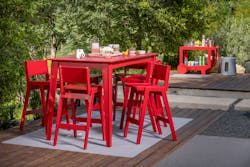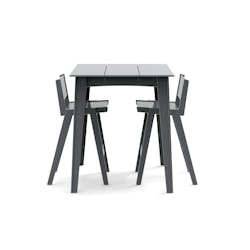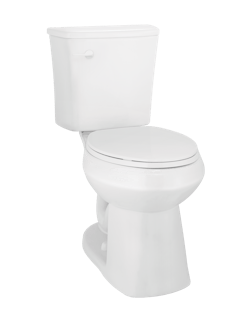4 Products That Contribute to the Circular Economy
The circular economy can have a major impact on the way we manage facilities. This next-level step in sustainability redefines the way we consume things.
Simply put, the world currently relies on a linear economy; this means that raw materials are taken from the Earth and transformed into products, which are used for a while and then eventually thrown away.
A circular economy, by contrast, would not produce waste because products are constantly maintained, refurbished and reused. This philosophy is based on three key principles, according to the Ellen MacArthur Foundation:
- Eliminate waste and pollution
- Circulate products and materials
- Regenerate nature
Embracing circularity in facilities management reduces (and attempts to eliminate) waste, which can then reduce costs by cutting down on the need to replace worn-out products. It emphasizes maintenance and reuse, maximizing the usefulness of existing resources. A circular approach can also help organizations meet sustainability targets, such as net zero waste status.
We identified four products that can help building owners and facilities teams make progress toward circularity.
Rheaply
Rheaply users can list their own products to sell, exchange, request or circulate assets internally or within preferred partner networks. Users can also use the platform to find new items from other organizations, enabling an easier workplace refresh without the carbon footprint or supply chain delays of new products.
All resources posted to Rheaply circulate internally within an organization for a set number of days before being released to the external community, so larger organizations can easily use it to trade materials between departments. The platform also makes inventory and tracking easy, so administrators can determine which assets are viable for reuse, which ones need repair and which can be exchanged internally or externally.
The platform features furniture, fixtures, equipment and other building materials and supplies. More than 50,000 items with a value of $19 million have been upcycled through the platform so far, diverting more than 20 metric tons of waste from landfills, Cooper said.
“Employing circular economy practices benefits organizations and their facilities teams both economically and sustainably by helping them avoid spending on materials they may already have internally and by reducing their carbon footprint from externally sourcing goods,” Cooper added.
Alfresco Bar and Counter Collection by Loll Designs
Users can also replace parts if needed instead of having to replace the whole product.
This intentional circularity is in line with the company’s goal of responsible environmental stewardship, King added. Production is designed to generate as little waste as possible. The company even redirects the heat generated from its CNC machines to heat its Duluth, Minnesota design/manufacturing facility during the cold winter months.
“Our products start off as large partially recycled HDPE sheets, and our engineering teams meticulously plan the best patterns and layouts to cut product,” King explained. “The HDPE chunks that are too small to be used for other products are then recycled and remade into new sheets to become other Loll products. We have a partner who separates out the plastic shavings from dust that collect on the floor to be recycled. The fasteners used to assemble your furniture are also 100% recyclable, along with about 99% of our packaging. Our product that is not fully assembled is flat packed in cardboard boxes, with reusable Loll tools and fasteners provided in a sustainable bag.”
The Alfresco collection features two table height sizes—bar and counter height—with coordinating chairs in nine colors that can be mixed and matched. Because they utilize standard heights, they’re easy to add to existing outdoor bars, counters or patios.
Shadow Toilet by Niagara
It’s made of vitreous china, which can be recycled by any recycling center that accepts porcelain. However, the toilet is engineered to need less maintenance than other products, keeping the product in use longer so you don’t need to recycle it in the first place. The Shadow doesn’t use a flapper, which can be prone to breaking and causing leaks. Instead, it utilizes an air transfer tube and a specially designed vessel that sits inside the tank.
When water fills the tank, air is pushed back into the trapway through the transfer tube, pressurizing the trapway and priming the toilet for a flush that’s quiet, yet powerful. Then, when the handle is activated, water leaves the inner chamber and sucks air from the trapway through the tube into the chamber, creating a vacuum in the trapway that accelerates the water’s force and sucks waste down the drainline and out to the sewer.
“By design, Niagara toilets have few moving parts that rarely need to be replaced,” explained Jenni Steele, vice president of marketing at Niagara. “A customer can have a Niagara toilet installed and not worry about replacing the toilet or the parts for years to come.”
Lightolier 3D Printed Luminaires by Signify
It’s also designed for the circular economy, according to Keith Eagle, vice president and general manager, U.S. Professional Channel at Signify. The luminaires are constructed with polycarbonate resin, which is 100% recyclable; they’re also printed without traditional mold and cast tools to minimize waste. At the end of the luminaires’ life, the resin can be shredded and reused to produce new luminaires.
“3D printing has been around for a while, but the technology is now redefining lighting design and manufacturing,” Eagle said. “It’s bespoke; customers can work directly with the Signify team to create their own unique designs from scratch or choose from our customizable, pre-designed luminaire series.”
The 3D printing method shortens the manufacturing process from six to nine months to just six to eight weeks, Eagle added. The luminaires have a drastically lower carbon footprint than comparable luminaires because they’re made from a single material, are lightweight and have fewer and less complex components.
“Our linear economy of ‘take-make-dispose’ is not sustainable. It will only become more wasteful and challenging to source materials in the coming years,” Eagle said. “The circular economy is our future, and lighting can play a key role in it.”
About the Author
Janelle Penny
Editor-in-Chief at BUILDINGS
Janelle Penny has been with BUILDINGS since 2010. She is a two-time FOLIO: Eddie award winner who aims to deliver practical, actionable content for building owners and facilities professionals.





